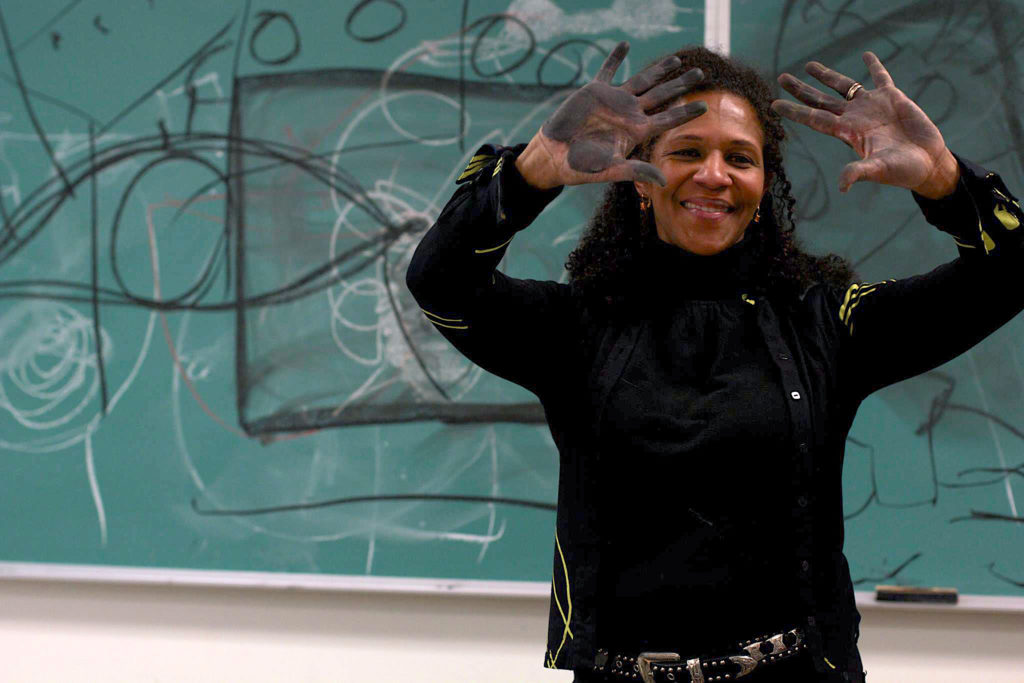Charmaine Lurch graduated from the Community Arts Practice (CAP) program in 2013.
Where do you work and what do you do?
I am a practicing artist, so I work for myself. I do visual arts-based, and narrative-based work and research.
But I am also an arts educator with Inner City Angels (ICA), an arts education organization. So I work in schools. Just as an example, I might work with students doing bee sculpture, as a way of teaching technique but also about bees in the environment, their ecology. It could be anything from a five-floor mural to work in an individual classroom. I’m primarily Ontario based but I have traveled to Vancouver. It’s really great to be kept so busy! I’m missing it already (NOTE: the interview was during the pandemic when schools were closed).
Tell us your work journey after the degree: what went well? What was challenging?
I completed the CAP program in 2013 – I went into it as a mature student, having come from Sheridan College in 1987, a very hands-on, practical arts education at that time, after which I worked in the arts. I was in the same cohort as Melissa Foster and John Caffery.
How did you use what you learned? When did you feel like “I wish that they had taught me about this in university!”
Thinking back to when you were in high school, what made you want to get into this? How does what you are doing match, and differ, from what you thought?
I went to an arts high school, and for me, it was a breeze. It was a great experience too. When I graduated, I got into OCAD, but I chose Sheridan. It was a very hands-on, practical degree. I remember some of my drawings at the time, I would draw pictures with blank faces. Everybody does that now, but at the time people thought it was strange. It was a sense of invisibility as a young black child – looking for a sense of belonging. After I finished at Sheridan, I traveled, which really centered me. I spent one year traveling in Europe, another year in India, in the Himalayas. I learned a lot about geography, about the environment, about people, belonging, unbelonging in space. It created a longing for connections to nature and geographies. I trace a lot of my understanding of my sense of myself in the world from those travels, which made me want to learn more. I looked at a lot of art, and it motivated my work.
Any other advice for people thinking of an undergrad environmental degree?
It’s cliche, but everything is connected. I have a lot of students placed with me, B.Ed students who are working towards becoming teachers, doing their teaching placements, they might have mathematics or science as their “teachables”. Once we start working with students, they’ll come to me and tell me with wonder how the arts are connected to the way they think, how it expands their knowledge and understanding. A mathematician told me they’d never had to think so hard about color or movement on a surface until they had a task of painting a flat wall. Science students will be amazed by how the arts help them in their field.
Be open to experiment. You’ll learn something new, even if it doesn’t work.


